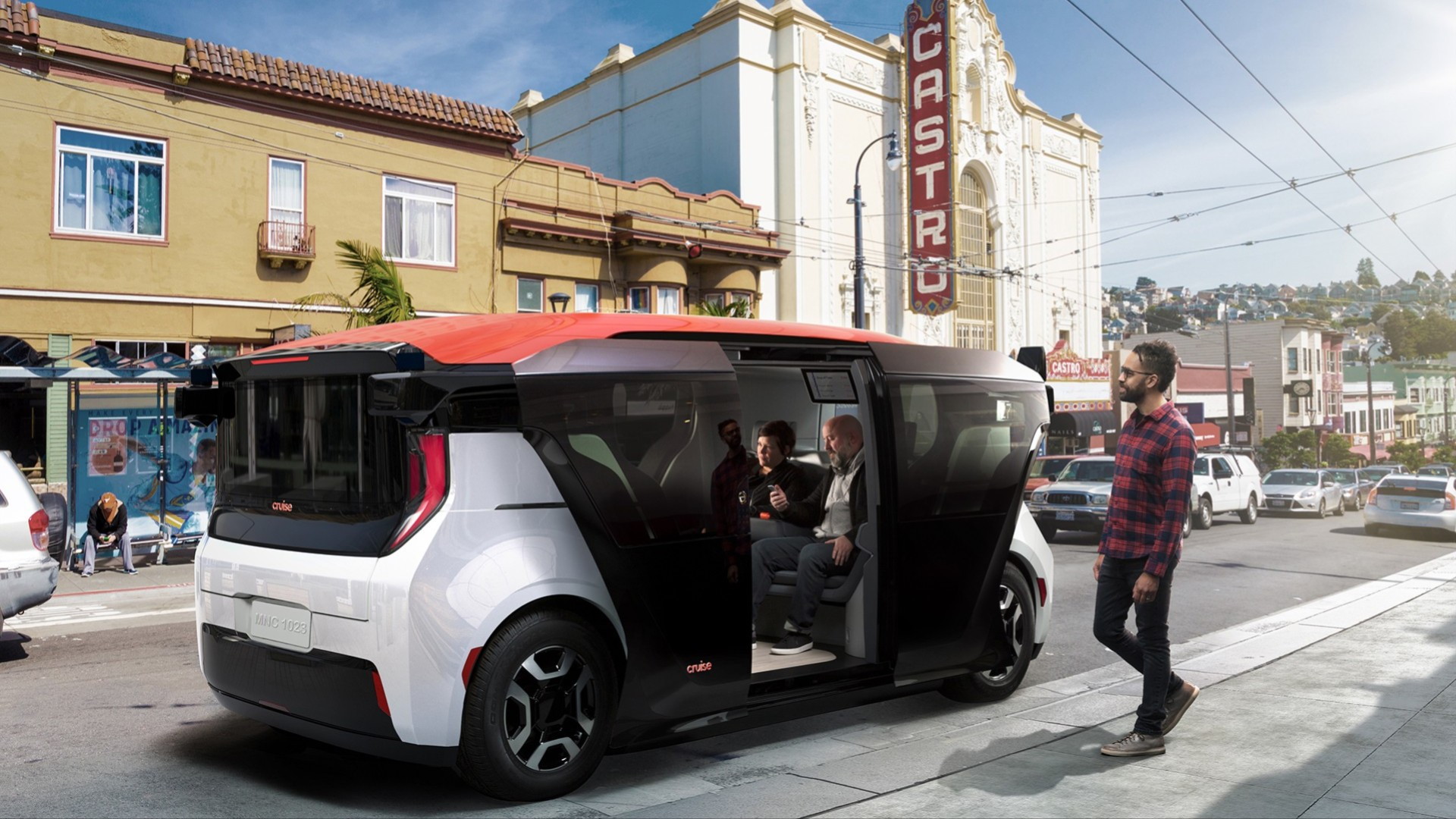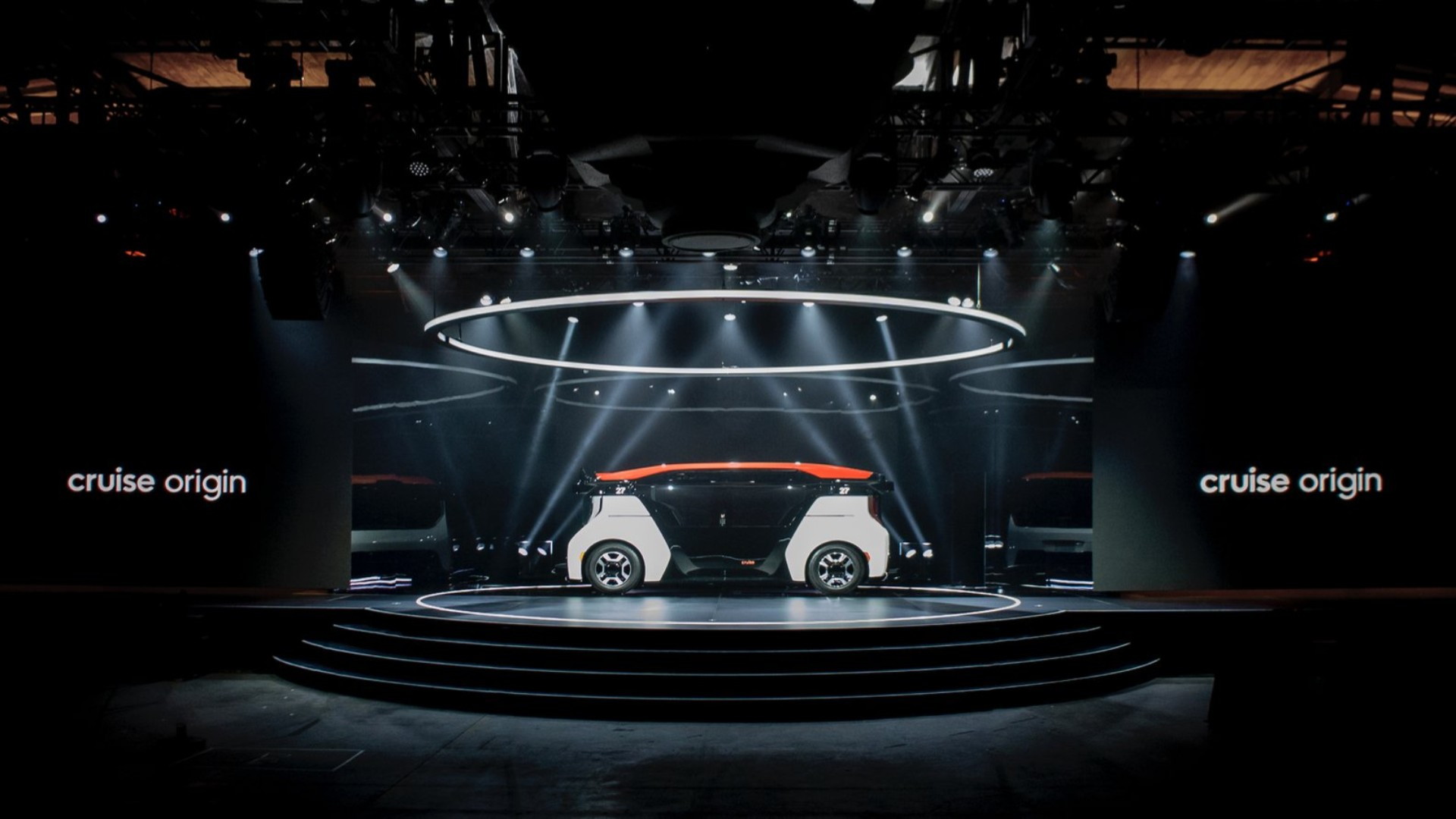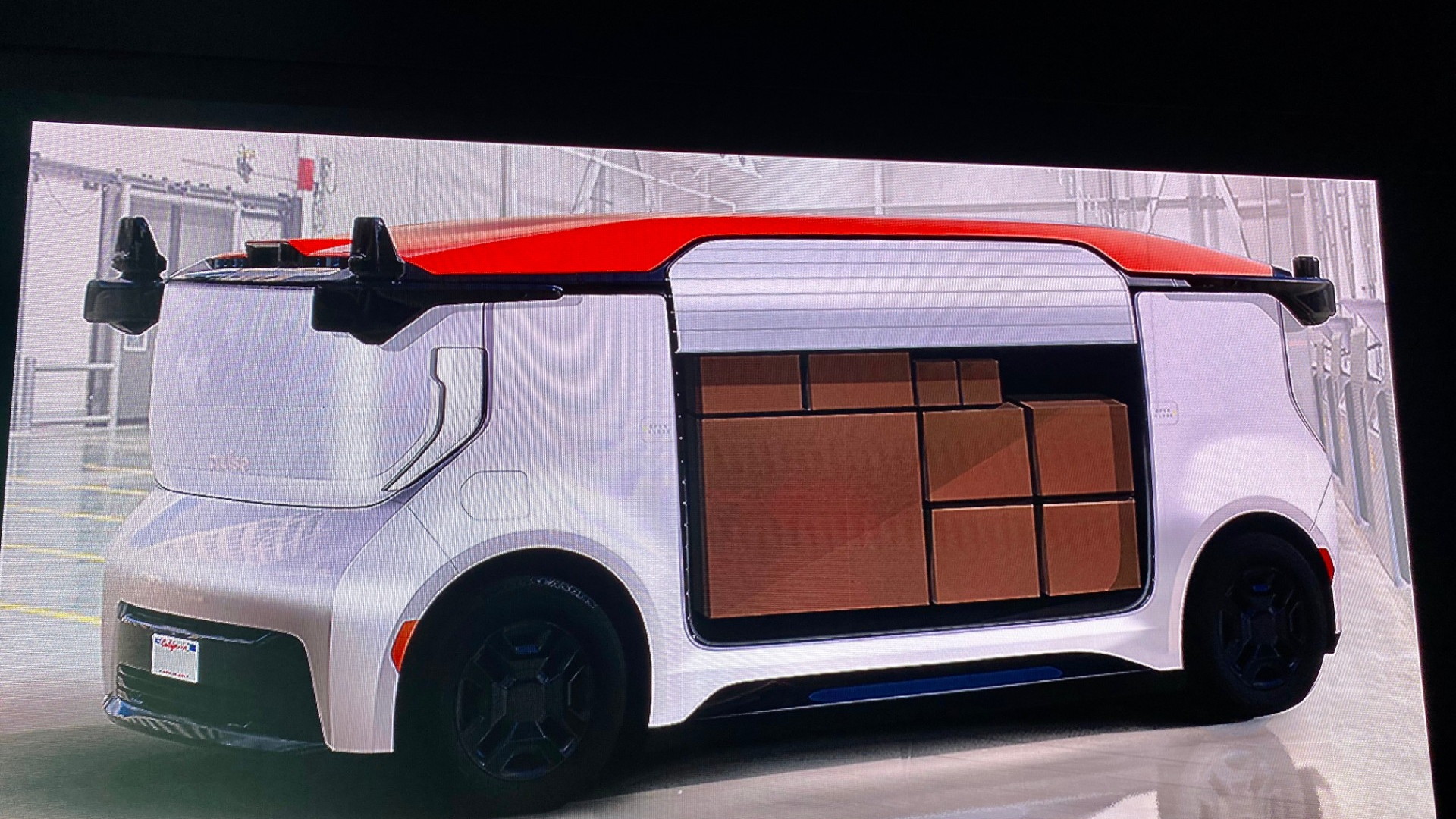As rainy weather and rush-hour congestion tested drivers’ patience and attention outside, Cruise revealed its fourth-generation driverless vehicle inside, near its San Francisco headquarters.
Cruise CEO Dan Ammann really put it bluntly when introducing the company’s next-generation vehicle that’s connected, autonomous, shared, and electrified. “It is self driven. It is all electric. It is shared. It is not a concept; it’s a production vehicle,” he said of the Origin, a GM-based people-mover good for up to six people and due in very limited-use situations as soon as next year.
Behind that bluntness is a more nuanced message, however. Cruise will offer a service that will one-up ride-hailing companies like Lyft and Uber by offering a more consistent experience, save energy, and save users money. And the Origin is the platform for making that happen.
With a next-generation sensor set—details not yet disclosed—and electric propulsion systems shared at a high level with GM’s next-generation BEV3 electric-vehicle architecture due soon, the Origin is built to take advantage of economies of scale, easy hardware upgradeability, and a service life intended for more than a million miles.
“We are leveraging all the resources that we can of the new GM electric platform,” said chief engineer Jason Fischer, who confirmed that it’s built with one motor at the rear axle.
With full Level 5 autonomous-driving capability, it has redundant controls for steering and braking built in from the start. There’s no driver’s seat, steering wheel or pedals; there are no windshield wipers or rearview mirrors. Wherever it is intended to be used, occupants are not expected to focus on the road ahead.
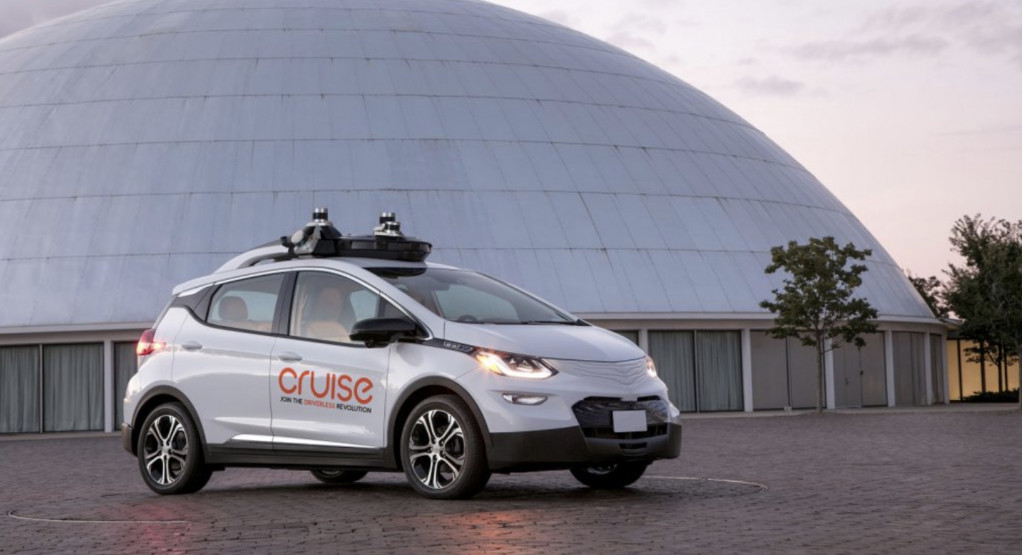
GM Cruise AV self-driving car
Right now, Cruise is getting itself to that origin point, so to say—by running its Chevy Bolt EV–based Gen 3 vehicles on San Francisco streets 24 hours, seven days a week, and testing them with a rideshare service that any Cruise employee can use.
Cruise, which was founded in 2013, has been owned by GM since 2016 and gained Honda as an investor in 2018, says that they’re already so smooth and safe that if you were to stretch out the chaos of San Francisco streets from coast to coast, they could go without a fender-bender.
Going completely electric—rather than hybrid, as some other autonomous-vehicle projects—is one of Cruise’s central goals, and critical for saving energy and saving users money.
“The first thing you do is get rid of the whole fossil-fuel-burning thing,” said Ammann. “The next thing you do is to remove the driver because no matter how advanced the car is, that driver is still tired, distracted, frustrated, and rushed.”

Cruise Origin driverless vehicle - CTO Kyle Vogt
Cruise claims that its new-generation sensor set, software, and hardware altogether have “super human” abilities. It’s assuming that several generations of sensor technology will be installed in the Origin over time. That means better pricing, an experience that’s going to get better over time, and less waste.
The Origin is steel-bodied and will be assembled in the U.S. at an existing GM plant, company officials confirmed.
Cruise has been working on this vehicle for three years. “There’s a level of maturity in this vehicle that we’re very proud of that we haven’t seen in the industry,” said Fischer.
Up close, the Origin looks very big, but according to those at Cruise it’s all a visual trick based on having such a large cabin. Side doors slide, so that the vehicles may coexist with bicyclists and scooters.
The Origin would be capable of highway speeds, Ammann said, but he declined to say how fast—or the approximate range of the vehicle.
At scale, Cruise expects to produce the Origin for roughly half as much as it costs to build a conventional electric SUV today. And the Cruise Origin will be utilized so much more of the time than vehicles with personal ownership.
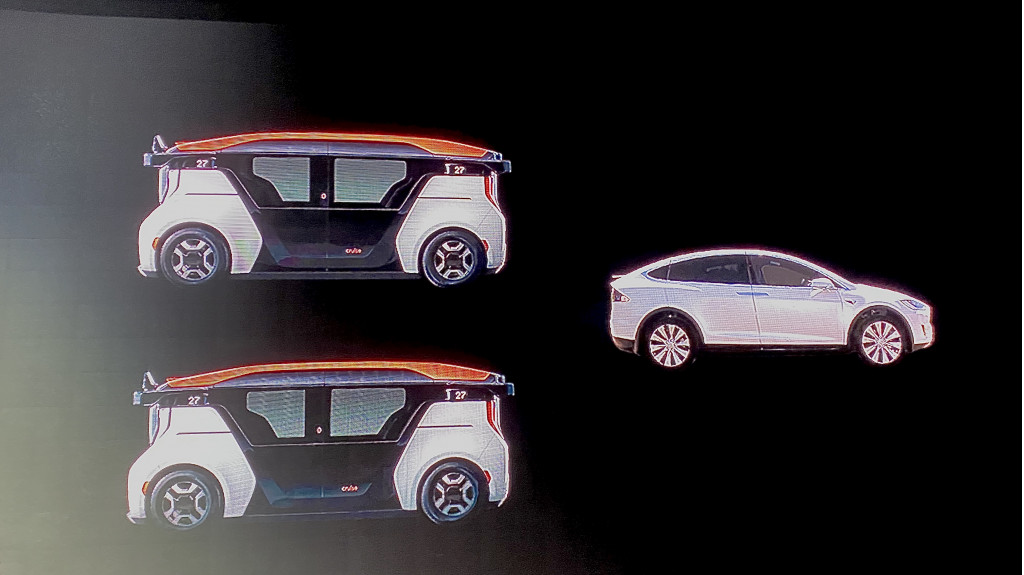
Cruise Origin driverless vehicle
Ammann said that the company’s investment in the Origin will give the company flexibility to develop vehicles for lots of other purposes—none of which will be owned by companies other than Cruise. They’ll all be provided as part of a service.
The Origin is engineered to be a global vehicle and potentially a global service, but in the short term the U.S. is the priority.
“We’re working very hard on FMVSS with NHTSA and the Department of Transportation to deploy these vehicles at scale when it’s safe to do so,” said Fischer. “We’ve had very good luck with the leadership at NHTSA and DOT to start removing some of the barriers...and they’ve been very cooperative with us.”

Cruise Origin driverless vehicle - sensors
The vehicle depends on the cellular network, possibly allowing for areas with brief dropouts. So cross-country operation isn’t considered part of that vision yet and at this stage Cruise is focused on establishing and proving it first in small demonstration areas, then in select city environments—making money on airport runs and moving people across urban areas.
“If we’re really serious about improving life in our cities, we need huge numbers of people to use the Cruise Origin,” said Ammann. “And that won’t happen unless we deliver on a very simple proposition: a better experience at a lower price that what you pay to get around today, here in San Francisco.”
